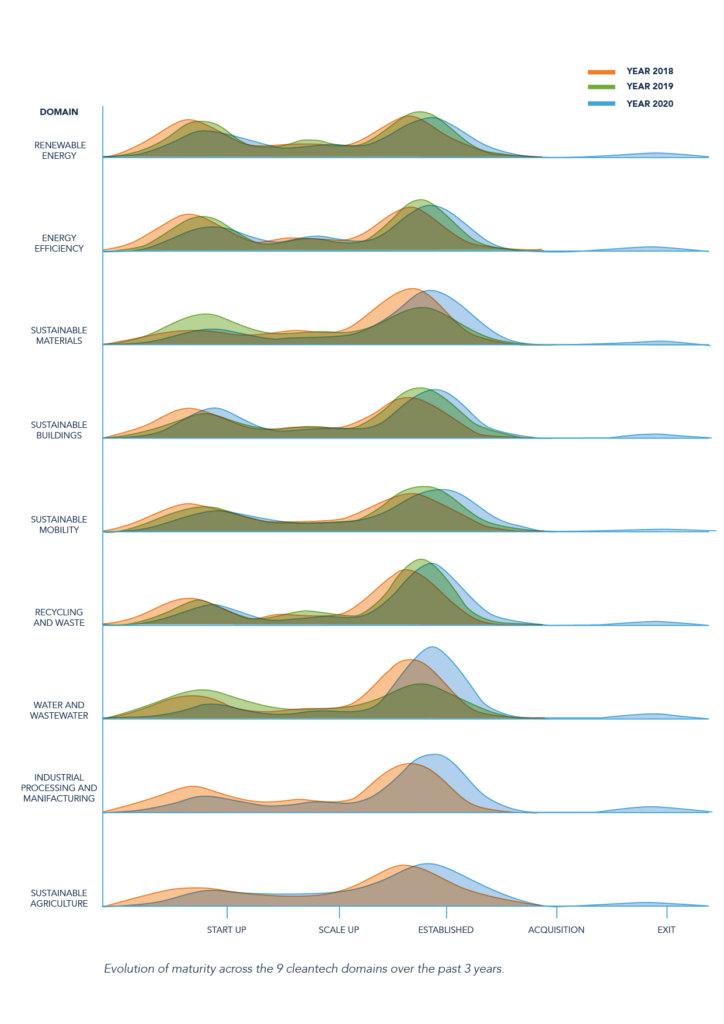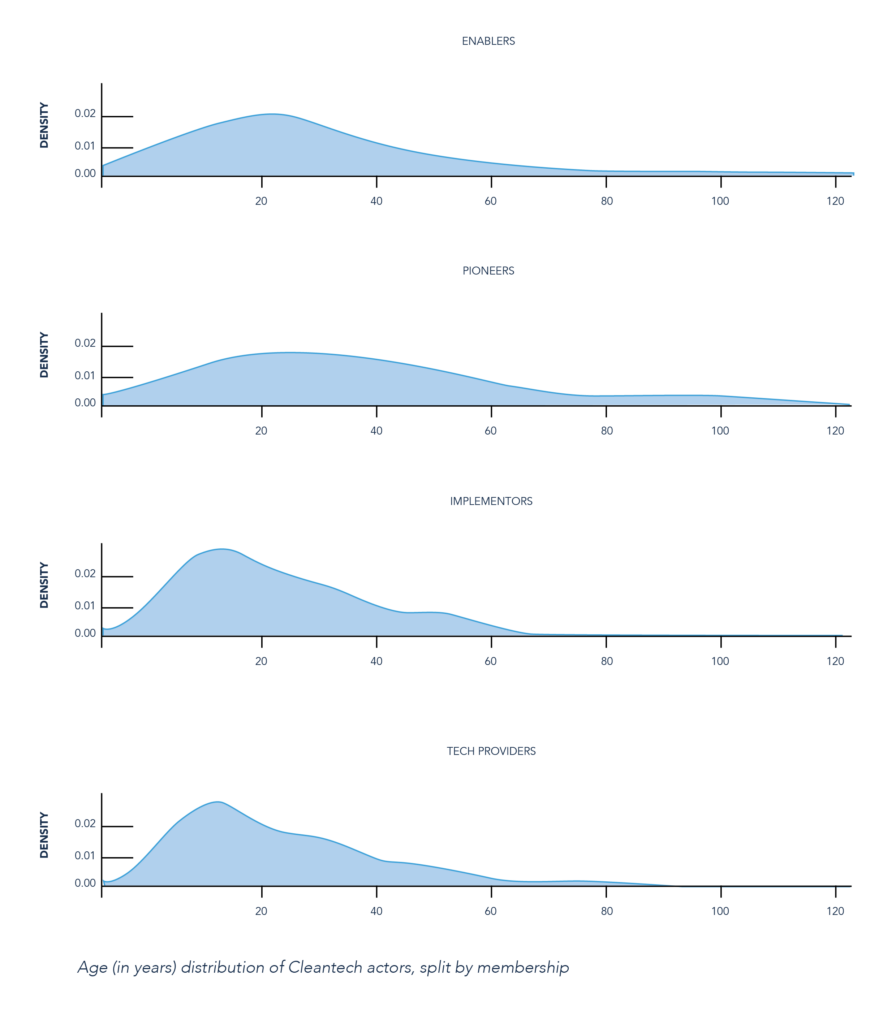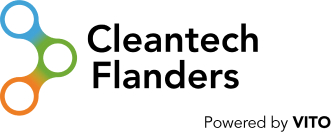TRENDS AND EVOLUTION OF CLEANTECH IN FLANDERS
Maturity of sector
Maturity of sector

The diversity of the activities encompassed under the label cleantech make it difficult to assess its overall level of maturity. Looking at the 9 identified subdomains however, one can assess that most domains have reached some degree of maturity in Flanders. This is evidenced by a fairly stable distribution of startups and established actors when comparing historic data.
In contrast to previous years there does seem to be an overall trend of a reduction in fraction making up startups across the sector. Most domains see a further increase in the fraction of established companies, indicating further maturing of these domains.
The reduction of the fraction of startups across all domains may be an indicator that innovation by these younger, and often dynamic, companies will get hampered in the years to come. This decline is regrettable, especially considering the recent drive from governing bodies at COP26 stressing the importance of innovation and technology in reaching their net zero targets.

Despite the fractional decline of start-ups across nearly all domains, the age distribution of cleantech actors show continued influx of new actors for all 4 actors. As expected, the relative new number of pioneers is on the lower end of the spectrum, as these companies usually require large capital investments to start operations. The distributions also show that the pioneers (whose core activities are not necessarily cleantech related) are the eldest faction, followed by enablers who are crucial as a foundation to build the cleantech industry upon. The implementors and tech providers each show a notable increase in new actors approximately 35 years ago (coinciding with the foundation of most early Enablers) but saw a spectacular growth of new actors about 10 years ago. They continue to show growth with a substantial number of new actors every year since.

